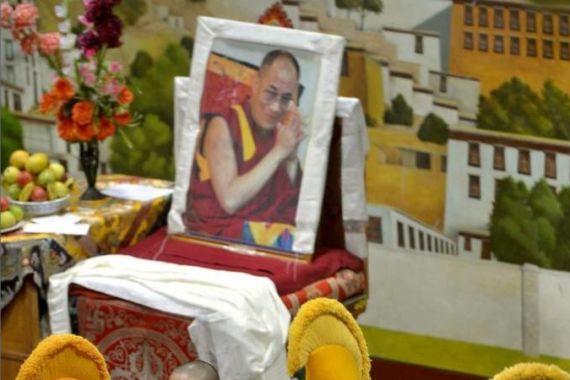Tibet exiles meet to discuss self-immolations
Gathering in Indian city focuses on self-immolations by Tibetans and ways to increase global support for their cause.

Tibetan exiles from around the world have met in India to discuss how to respond to dozens of self-immolations by Tibetans and find new ways to increase global support for their people’s cause.
More than 400 delegates gathered in the Indian hill town of Dharmsala on Tuesday to attend the second Special General Meeting of Tibetans.
The first meeting in 2008 followed protests in the Tibetan capital, Lhasa, that resulted in a harsh crackdown by the Chinese government.
The self-proclaimed Tibetan government-in-exile says 41 Tibetans have died from 51 attempts at self-immolation have been made since March 2009.
It considers them a sign of the suffering Tibetans feel under China’s repressive policies. China says the Tibetan spiritual leader, the Dalai Lama, encourages the suicide attempts.
Anthem played
Fifty-one Tibetan flags, each representing a self-immolator, hung from the surrounding balcony inside the hall where Tuesday’s meeting took place.
The Tibetan national anthem was played before the agenda of the meeting was formally announced.
The four-day meeting opened with a portrait of the Dalai Lama being carried in a procession and placed on a ceremonial chair in reverence.
Apart from discussing how the Tibetan community across the world should respond to the immolations, the meeting is also expected to discuss how to highlight the religious and cutural repressions Tibetans face.
|
“The fact that Tibetans after 50 plus years are still protesting and in the drastic form of self-immolation clearly indicates that they are protesting against the occupation of Tibet and repressive policies of the Chinese government“ – Lobsang Sangay, Prime Minister of the Tibet government-in-exile |
“The fact that Tibetans after 50 plus years are still protesting and in the drastic form of self-immolation clearly indicates that they are protesting against the occupation of Tibet and repressive policies of the Chinese government,” Lobsang Sangay, prime minister of the government-in-exile, said after Tuesday’s session.
The delegates involved in the discussions this week will make proposalsand recommendations on Thursday.
A final recommendation of the meeting will be formulated on Friday, the last day of the meeting.
Apart from discussing how the Tibetan community across the world should respond to the immolations, the meeting is also expected to discuss how to highlight the religious and cutural repressions Tibetans face.
The Dalai Lama, the supreme spiritual leader for Tibetan Buddhists, will not participate in the discussions but will attend a prayer for his long life to be offered on Friday.
Sangay became head of Tibet’s exile administration last year after the Dalai Lama stepped down as political leader of the Tibetan people.
China claims Tibet has always been Chinese territory, but most Tibetans say the Himalayan region was independent for much of its history.